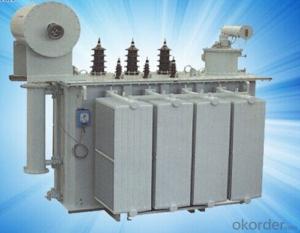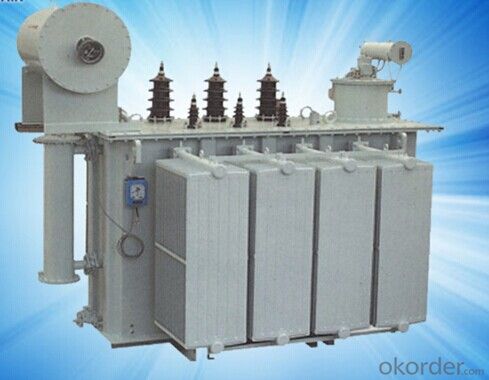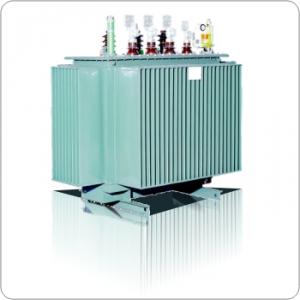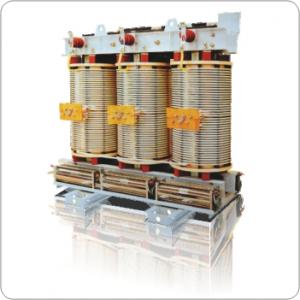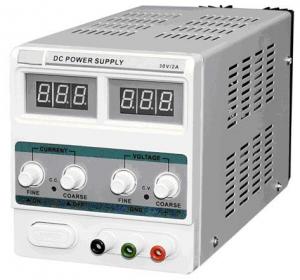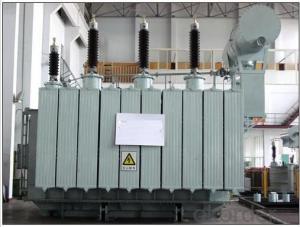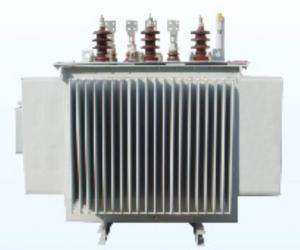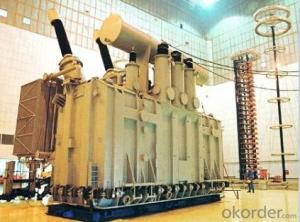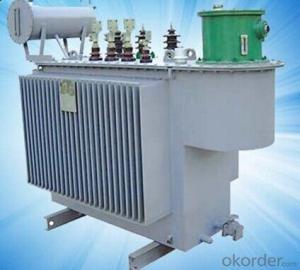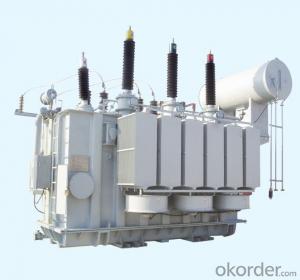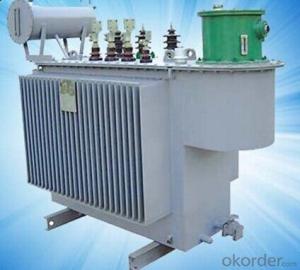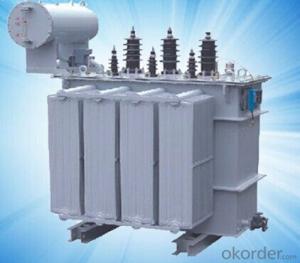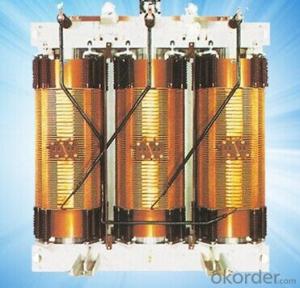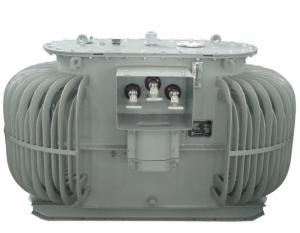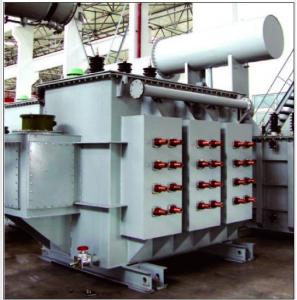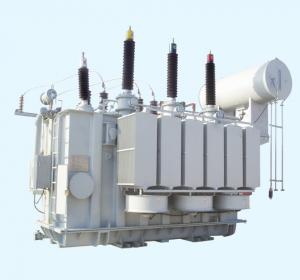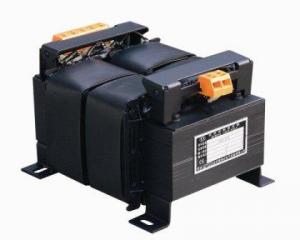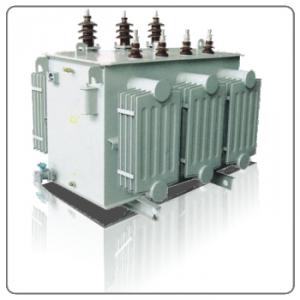SZ9-1600-20000/33KV Three Phase Oil Immersed On-load Tap Power Transformer
OKorder Service Pledge
Quality Product, Order Online Tracking, Timely Delivery
OKorder Financial Service
Credit Rating, Credit Services, Credit Purchasing
You Might Also Like
SZ9-1600-20000/33KV three phase oil immersed on-load tap power transformer is suitable for distribution syatem with 35KV,50HZ electyric power circuit.it confirms to GB1094<power transformer>standard.

- Q: I am looking for a transformer with an output of 6 volts, and 1.8 amps, or any transformer that can run that cycle. Please, let me know. I've been looking for months now, and cannot find anything. Please help. Where would I buy it? Lowes?
- If you don't find it you have got to make it. This is a common transformer. Probably you are finding difficulty with it's current rating.
- Q: I have two questions:1. Can somebody please explain to me how transformer coupling is so good for maximum power transfer? Please be thorough. Is it because of the primary ac resistance and bjt output impedance being equal? I mean this should work because the power on the primary coil is the same as the power on the secondary coil so the power delivered to the primary coil which is the maximum power in this case, would ideally be delivered to the secondary coil, right? 2. And how can transformers be used to increase the overall voltage gain of a two stage common emitter based amplifier, something like
- Transformer Coupled Amplifier
- Q: What is the principle of the conversion of the transformer? How to restore the secondary side to the primary side?
- Understand P1 = P2 (no loss here). To know the return of the.
- Q: TN-S system in the transformer neutral point that pe line and n-line neutral point how to take? N line and pe line in the neutral point on the connected, and then ground the same ground? Or that n line from the neutral point out of their own then a pe line then one after another? If the neutral point out of the ground, in the three-phase imbalance when the n-line current?
- TN-S way power supply system It is the work of the zero line and dedicated protection line PE strictly separate power supply system, N line and PE line in the transformer working ground once separated, not to re-connect. Called TN-S power supply system. The TN-S power supply system is characterized as follows. 1) When the system is running normally, there is no current on the dedicated protection line, but there is an unbalanced current on the working zero line. PE line to ground no voltage, so the electrical equipment metal shell connected to zero protection is connected to the dedicated protection line PE, safe and reliable. 2) The working zero line is used only as a single-phase load circuit. 3) Dedicated protection line PE is not allowed to break, but also not allowed to enter the leakage switch. 4) the use of leakage on the trunk protection, the work of the zero line shall not have repeated grounding, and the PE line has repeatedly grounded, but not through the leakage protection, so TN-S system power supply lines can also be installed on the leakage protection. 5) TN-S power supply system is safe and reliable, suitable for industrial and civil construction and other low-voltage power supply system. In the construction work before the "three links and one leveling" (Dentsu, water, road and ground level - must use TN-S way power supply system.
- Q: describe a stabilised transformer
- I'm only guessing that you may be reffering to a transformer that is equipped with taps on the windings that allow for +/- 10% votage changes on the secondary to maintain a fixed voltage when the input voltage (primary) varies or the load on the secondary varies. Thus stabilizing the voltage to the load. These are called TCUL (tap changeing under load) or LTC (load tap changing)-the more common term-transformers.
- Q: I remember a Transformers cartoon and there was like a gas in it and if the Autobots were in a place that the gas was in there, they would turn red and turn evil and fight each other. And also Optimus Prime was dead fist and then some Autobots bring him back to life And I think Rodimus has the matrix. What was that movie called?
- Yup, that was the episode in season three where Optimus Prime is brought back to life (after his death in the movie). The episode is called Return of Optimus Prime and is a two parter. The red stuff is rage and can pass if you get touched a la 28 days later. This is the episode that had Optimus return to life and get back the matrix from Rodimus (turning again back to Hot Rod). He unleashed the matrix to defeat the rage, but it empties the matrix of all it contained.
- Q: hi guys can any of you give me advice on wot i need 2do on removing and replacing a faulty line output transformer on a rear veiw projection tv as i have the part and the local tv shop wont fix it 4 me.wot would be the best way to discharge the power from it first and could i jus cut the 2 wires on the old 1 and use connector blocks to connect the new 1 in would this be ok to do or do it need to soilder connected on?. and is there any adjustments that would need to be done to the set when i have it installed be4 i turn it on any help much appreicated
- If you have an identical replacement transformer there shouldn't be a need to adjust anything to start. As to cutting wires to remove the old transformer to replace the new one, I suggest you make yourself a chart of any color coding of the wires or tagging them so there is no error as to what to connect to what on the new transformer. I personally would replace the transformer as the manufacturer installed the original one. As for discharging, use a 10K ohm resistor with one side to ground and the other side of the resistor to the components you want to discharge. I don't advise just grounding direct. Good luck and be careful.
- Q: can u use a 220v to 12v transformer step down transf, switch the primary as the secondary, and vice and make it a 12v to 220v transformer.
- It is a 12V center tapped if you input 220VAC. If you put in 110VAC, then it is 6V center tapped. Generally, if you have a 12V-0-12V, it is center tapped and you can generate 24Vdc out of it, if you use without center-tap wire.
- Q: How is the insulation of the transformer divided?
- n the oil-immersed transformers, the main insulation to oil-paper barrier insulation structure is most commonly used. The longitudinal insulation is the insulation between the parts of the same winding, such as insulation between different windings, between layers and turns.
- Q: How the transformer is transformer
- And then come to: U1 / U2 = N1 / N2 In the case of no-load current, I1 / I2 = -N2 / N1, that is, the original and secondary coil current RMS value is inversely proportional to the number of turns, and the phase difference π. And then available I1 / I2 = N2 / N1 Ideal transformer original, vice coil power equal P1 = P2. Indicating that the ideal transformer itself without power loss. The actual transformer always has the loss, its efficiency is η = P2 / P1. Power transformers are highly efficient and up to 90%.
Send your message to us
SZ9-1600-20000/33KV Three Phase Oil Immersed On-load Tap Power Transformer
OKorder Service Pledge
Quality Product, Order Online Tracking, Timely Delivery
OKorder Financial Service
Credit Rating, Credit Services, Credit Purchasing
Similar products
Hot products
Hot Searches
